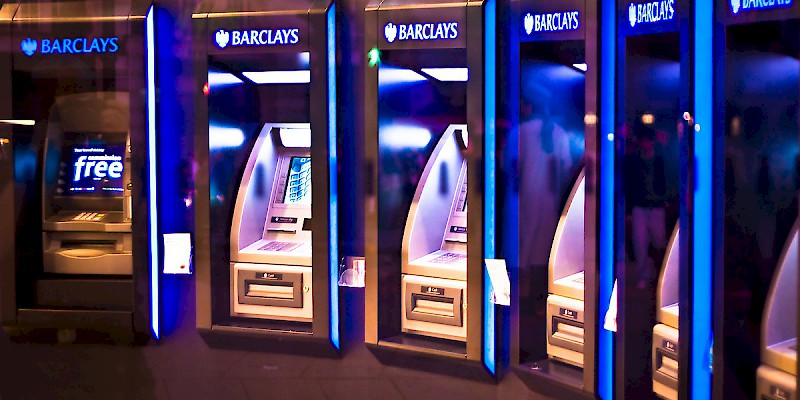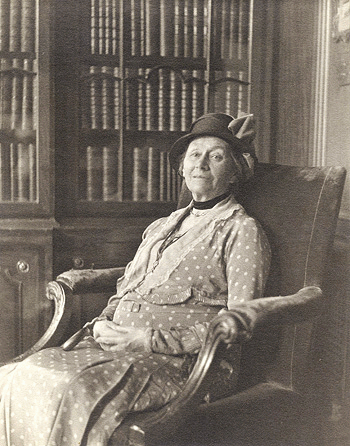ATMs and bank cards

Using debit cards to get cash at an ATM (automated teller machine) in the U.K.
The easiest an cheapest way to get and carry cash abroad, especially in Europe, is the same way you do at home: Simply use the ATM card linked to your home checking account to get pounds out of street corner ATMs.
If your ATM card is on the MasterCard/Cirrus or Visa/Plus networks—and virtually all bankcards are, whether your local system is called Mac or Star or whatever (look for the name and symbol on the back of the card)—then you will be able to get cash out of British ATM machines.
Just like at home, it will withdrawal the money directly from your checking account, convert it into pounds—at a more favorable exchange rate than you'd get changing cash or traveler's checks inside the bank at a teller window—and spit out pound notes.
Couldn't be any easier.
How to find ATMs in the U.K.
As in the US, you can find banks on almost every block in major cities and on the main squares or high streets (main streets) in smaller towns. All of them come equipped with an ATM machine willing to spit out local cash just as soon as you stick in your bank card and enter your PIN.
Virtually all ATMs will accept a card from any of the major networks, so you really don't need the automated locators provided by MasterCard/Cirrus and Visa/Plus (check the links section).
Why an ATM is the best way to get pounds
The reasons to use an ATM (over any other method of getting cash abroad) are legion. You don't have to stand in long lines at the bank, waiting to hand over your passport as ID in order to cash traveler's checks then forking over a commission of 10% or so.
With an ATM, you just saunter up, stick in your card, punch in the PIN, and it spits out local cash. No fuss, no commission, no lines.
Best of all, the cash comes at a lower exchange rate and there's no commission, as U.K. banks have not (yet) hit upon this method of nickel-and-diming us out of that extra $1.50–$4.50.
That said, I have heard that some American banks have begun charging a higher fee for international withdrawals and, sadly, many U.S. banks are also now charging an additional "foreign exchange" fee for withdrawing money abroad—even though it doesn't cost them a single cent (or euro) extra; it's just a way of stealing more money from you. Ask your local bank before traveling to avoid a nasty surprise.
If your home bank charges the typical $1 to $3 fee for using an out-of-network ATM, you will see that on your bank statement. (Note that many smaller banks, online banks, and credit unions do not charge these out-of-network fees. » more)
Tips for using a cash machine in Europe
- Make sure your bankcard is linked to your checking account, as some banks won't let you withdrawal from your savings account at foreign ATMs.
- Make sure your PIN is only 4 digits long (not six), as some European banks won't accept longer ones.
- Make sure you let your bank know you'll be making foreign withdrawals. Banks sometimes have automated software that looks for suspicious usages that might imply theft—i.e. you card is suddenly being used for lots of withdrawals, far from home, for larger than usual amounts—and freezes your account to protect you. That’s very nice...unless you are the one making larger than usual withdrawals far from home! By the way, same rule goes for your credit cards.
- Know that you will get an even better rate (an average of 9% better) if you avoid using ATMs and cash at all and instead use a credit card wherever possible.
- Ally.com - Online-only bank (and the one I use), with ATM feee refunds and no foreign transaction fees. Sadly, no credit cards (yet)—though you can use your MasterCard-branded bank card as a debit card.
- Usaa.com - Online-only bank open to current and former U.S. military personnel and their families; ATM fee refunds, and credit cards with only 1% foreign transaction fees.
- Schwab.com - This famous brokerage firm also offers online-only checking and savings accounts with ATM fee refunds.
- Asmarterchoice.org - Credit union–finding site. Credit unions often have low or no foreign trasnaction fees on their credit cards, ATM fee–refund policies, very few fees, and interest-bearing checking accounts. In other words: What a bank should be.
- Findabetterbank.com - Site to find credit unions and other local banks. These often have low or no foreign transaction fees on their credit cards and ATM fee–refund policies.
- Ncua.gov - All about credit unions.
- Credituniondb.com - Bare-bones credit union-finding database.
- Findabetterbank.com - Site to find credit unions and other local banks. These often have low or no foreign transaction fees on their credit cards and ATM fee–refund policies.
- Capitalone.com - Offers cards with no foreign transaction fee, and chip-and-signature enabled (making it easier to use in Europe).
- Bankofamerica.com - Offers cards with no foreign transaction fee, and chip-and-signature enabled (making it easier to use in Europe).
- Madfientist.cardratings.com - Good simple search engine to find travel-worthy cards, from no foreign fees to the ones with the best points.

 Alice Liddell, Age 7
Alice Liddell, Age 7 Alice Liddell, age 20
Alice Liddell, age 20 Alice Pleasance Liddell Hargreaves, age 80
Alice Pleasance Liddell Hargreaves, age 80




